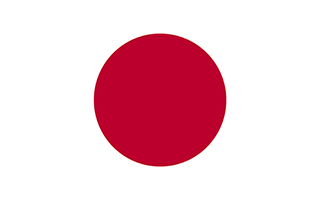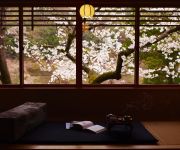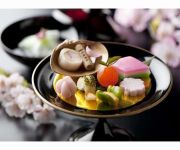Safety Score: 2,8 of 5.0 based on data from 9 authorites. Meaning we advice caution when travelling to Japan.
Travel warnings are updated daily. Source: Travel Warning Japan. Last Update: 2024-08-13 08:21:03
Delve into Sagano
The district Sagano of Arashiyama in Kyōto-shi (Kyoto) is a district located in Japan about 231 mi west of Tokyo, the country's capital town.
In need of a room? We compiled a list of available hotels close to the map centre further down the page.
Since you are here already, you might want to pay a visit to some of the following locations: Muko, Kyoto, Kamigyo-ku, Nagaoka and Kameoka. To further explore this place, just scroll down and browse the available info.
Local weather forecast
Todays Local Weather Conditions & Forecast: 12°C / 54 °F
| Morning Temperature | 9°C / 48 °F |
| Evening Temperature | 10°C / 49 °F |
| Night Temperature | 7°C / 45 °F |
| Chance of rainfall | 0% |
| Air Humidity | 50% |
| Air Pressure | 1018 hPa |
| Wind Speed | Gentle Breeze with 8 km/h (5 mph) from South-East |
| Cloud Conditions | Clear sky, covering 5% of sky |
| General Conditions | Sky is clear |
Thursday, 5th of December 2024
10°C (51 °F)
7°C (44 °F)
Overcast clouds, gentle breeze.
Friday, 6th of December 2024
11°C (52 °F)
7°C (45 °F)
Sky is clear, moderate breeze, clear sky.
Saturday, 7th of December 2024
8°C (47 °F)
5°C (41 °F)
Light rain, gentle breeze, scattered clouds.
Hotels and Places to Stay
Kyoto a Luxury Collection Hotel Suiran
(RYOKAN) Ryokan Momijiya Bekkan Kawa no Iori
(RYOKAN) Ryotei Rangetsu
TOGETSUTEI
(RYOKAN) Kyoto Arashiyama Onsen Kadensho
HOSHINOYA KYOTO
Sun Members Kyoto Saga
Hotel Binario Sagaarashiyama
Ranzan
(RYOKAN) Saga Grace Hotel
Videos from this area
These are videos related to the place based on their proximity to this place.
[HD]嵯峨野線 快速 嵯峨嵐山→京都 Sagano Line Rapid[3]
嵯峨野線 快速 嵯峨嵐山→京都 Sagano Line Rapid going Sagaarashiyama to Kyoto.
[FHD]嵯峨野トロッコ発着@トロッコ嵯峨 Arrival and Departure of Sagano romantic Train
嵯峨野トロッコの発着@トロッコ嵯峨 Arrival and Departure of "Sagano romantic Train" at Truck Saga.
[FHD]嵯峨野トロッコ送り込み@嵯峨嵐山(20120712) Delivering Sagano Truck Train
嵯峨野トロッコ送り込み@嵯峨嵐山(20120712) Delivering Sagano Truck Train DD51牽引 Using a DD51 Diesel Locomotive.
Kyoto Sagano Bamboo forest【京都・嵯峨野の竹林】
嵐山の北東に広がる嵯峨野は、平安時代から貴族の別荘や庵が開かれた土地。かつて貴族が愛したこの場所は、1000年を経た今も多くの人々に愛...
嵐山と嵯峨野 2014年秋(Arashiyama and Sagano)
2014年11月28日 京都・嵐山と嵯峨野の秋 Arashiyama (嵐山) is a pleasant, touristy district in the western outskirts of Kyoto. The area has been a popular destination since the...
Videos provided by Youtube are under the copyright of their owners.
Attractions and noteworthy things
Distances are based on the centre of the city/town and sightseeing location. This list contains brief abstracts about monuments, holiday activities, national parcs, museums, organisations and more from the area as well as interesting facts about the region itself. Where available, you'll find the corresponding homepage. Otherwise the related wikipedia article.
Arashiyama
is a district on the western outskirts of Kyoto, Japan. It also refers to the mountain across the Ōi River, which forms a backdrop to the district. Arashiyama is a nationally-designated Historic Site and Place of Scenic Beauty.
Adashino Nenbutsu-ji
Adashino Nenbutsu-ji is a Buddhist temple in Ukyo-ku, Kyoto, Japan. In 811 Kūkai is said to have founded a temple, then Honen altered it to the present Nenbutsuji. Situated high on a hill overlooking the city from the northwest, it sits in an area where since the Heian period people have abandoned the bodies of the dead, exposing them to the wind and rain.
International Research Center for Japanese Studies
The International Research Center for Japanese Studies (国際日本文化研究センター, Kokusai Nihon Bunka Kenkyū Sentā), or Nichibunken (日文研), is an inter-university research institute in Kyoto. Along with the National Institute of Japanese Literature, the National Museum of Japanese History, and the National Museum of Ethnology, it is one of the National Institutes for the Humanities. The center is devoted to research related to Japanese culture.
Nishikyō-ku, Kyoto
Nishikyō-ku, Kyoto is one of the eleven wards in the city of Kyoto, in Kyoto Prefecture, Japan. Its name means "west capital ward" and it is situated on the western edge of the city, to the south of center. The ward was established on October 1, 1976, after it was separated from Ukyō-ku. The Katsura River is the border between Nishikyo-ku and Ukyo-ku. Katsura Imperial Villa, on that river, is one of the most widely known features of Nishikyo-ku.
Iwatayama Monkey Park
Iwatayama Monkey Park is a commercial park located in Arashiyama in Kyoto, Japan. The park is on Mt Arashiyama, on the same side of the Oi River as the train station. It is inhabited by a troop of over 170 Japanese macaque monkeys. The animals are wild but can be fed food purchased at the site.
Arashiyama Station (Hankyu)
Arashiyama Station is a railway station in Kyoto, Japan. It is the terminal station of the Hankyu Arashiyama Line. The station is a short walk from Nakanoshima Park and Togetsukyo Bridge. In spring, sakura trees lining the station light up in an array of white and pink.
Matsunoo-taisha
Matsunoo-taisha is a Shinto shrine located at the far western end of Shijo Street, approximately 1.3 kilometers south of the Arashiyama district of Kyoto, Japan. It is home to a spring at the base of the mountain, Arashiyama, that is believed to be blessed. It is said that during the move of the capital from Nagaoka to Kyoto, a noble saw a turtle bathing in under the spring's waterfall and created a shrine there.
Shigureden
Shigureden is a theme park in Kyoto, Japan. On January 27, 2006 Nintendo opened an exhibition in this park called "Ogura Hundred Poems by famed 100 poets", featuring poetry-related karuta, animated floors and interactivity through the use of special Nintendo DS.
Matsuo Station (Kyoto)
Matsuo Station on the Hankyu Arashiyama Line is located a short walk from both the Katsura River and Matsuo Shrine in Kyoto. During the late fall, the Momiji trees that line the station provide a spectacular display of red, orange, and yellow leaves. The station is accessible by wheelchairs although passengers of Katsura-bound trains have to use a special gate for wheelchairs. Kyoto Bus #3 to Kyoto Station also connects to the station.
Saihō-ji (Kyoto)
is a Rinzai Zen Buddhist temple located in Matsuo, Nishikyō Ward, Kyoto, Japan. The temple, which is famed for its moss garden, is commonly referred to as "Koke-dera", meaning "moss temple", while the formal name is "Kōinzan Saihō-ji" . The temple, primarily constructed to honor Amitabha, was first founded by Gyōki and was later restored by Musō Soseki. In 1994, Saihō-ji was registered as a UNESCO World Heritage Site, as part of the "Historic Monuments of Ancient Kyoto".
Tenryū-ji
—more formally known as Tenryū Shiseizen-ji —is the head temple of the Tenryū branch of Rinzai Zen Buddhism, located in Susukinobaba-chō, Ukyō Ward, Kyoto, Japan. The temple was founded by Ashikaga Takauji in 1339, primarily to venerate Gautama Buddha, and its first chief priest was Musō Soseki. Construction was completed in 1345.
Hozu River
The Hozu River is a part of Katsura River in Kyoto Prefecture, Japan. The river begins in the mountains near Kameoka, a town northwest of Kyoto City. It snakes into the Arashiyama section of western Kyoto before changing its name to Katsura River. The Hozu River is considered scenic, and is known primarily for its association with Hozugawa Kudari, literally "down the Hozu river", a sightseeing whitewater boat that goes downstream from Kameoka to Arashiyama.
Kōryū-ji
is a Shingon temple in Uzumasa, Ukyō Ward, Kyoto, Japan. The temple is also known by the names Uzumasa-dera and Kadono-dera, and was formerly known as Hatanokimi-dera, Hachioka-dera and Hōkō-ji . Kōryū-ji is said to be the oldest temple in Kyoto, having been constructed in 603 by Hata no Kawakatsu upon receiving a Buddhist statue from Prince Shōtoku. Fires in 818 and 1150 destroyed the entire temple complex, but it was rebuilt several times since.
Danrin-ji
Danrin-ji was Japan's first Zen temple, founded in Saga, Kyōto by order of Tachibana no Kachiko during the Jōwa era. The temple was destroyed by fire in 928, but was restored, and during the Muromachi period the temple was designated as one of Kyōto's five great Buddhist nunneries. The temple eventually fell into disrepair, and in 1339 construction of Tenryū-ji began on its grounds.
Uzumasa Tenjingawa Station
Uzumasa Tenjingawa Station is a train station on the Kyoto Municipal Subway Tōzai Line, in Ukyō-ku ward, city of Kyoto, Kyoto Prefecture, Japan.
Uzumasa Station
Uzumasa Station is a train station in Ukyo-ku, Kyoto, Japan.
Saga-Arashiyama Station
Saga-Arashiyama Station is a railway station on the West Japan Railway Company (JR West) Sanin Main Line in Ukyo-ku, Kyoto, Japan. The Sagano Scenic Railway starts here.
Otagi Nenbutsu-ji
Otagi Nenbutsu-ji is a Buddhist temple in the Arashiyama neighborhood of Kyoto, Japan. Otagi Nenbutsu-ji was founded by Empress Shōtoku in the middle of the eighth century. Though was destroyed by the flooding of the Kamo River, it was rebuilt as an offshoot of Enryaku-ji, a nearby temple. In the 13th century, it was again destroyed during a civil war. The temple was moved to its current location in 1922, later suffering typhoon damage in 1950.
Kyoto Saga University of Arts
Kyoto Saga University of Arts is a private university in Ukyo-ku, Kyoto, Kyoto, Japan. The school first opened as a junior college in 1971 and became a four-year college in 2001.
Nonomiya Shrine
, or the Shrine in the Country, is a Shinto shrine in the Arashiyama district on the west side of the city of Kyoto in Kyoto prefecture, Japan. The specific site of the shrine changed somewhat over time, as the location of the shrine was fixed anew by divination when a new imperial priestess was to undergo purification before traveling to take up her duties at Ise Shrine.
Jingo-ji
is a Buddhist temple in Kyoto. It stands on Mount Takao to the northwest of the center of the city. The temple adheres to Shingon Buddhism. Its honzon is a statue of Yakushi Nyorai, the Buddha of Healing or "Medicine Buddha". The temple was established in the year 824, as a merger of two private temples founded earlier by Wake no Kiyomaro. They were the Jingan-ji (神願寺) in Kiyomaro's home province and the Takaosan-ji (高雄山寺). Jingo-ji holds sixteen National Treasures of Japan.
Kami-Katsura Station
Kami-Katsura Station is a train station in Nishikyō-ku, Kyoto, Kyoto Prefecture, Japan.
Seiryō-ji
is a Buddhist temple in the Saga district of Ukyō-ku, Kyoto, Japan. It is also known as Saga Shaka-dō. It is devoted to the practice of Yūzū Nenbutsu. Initially, the temple belonged to the Kegon sect; then it became a Pure Land temple. The honzon is an image of Gautama Buddha (Shaka-nyorai). The wooden statue is a National Treasure of Japan. Seiryō-ji also possesses National Treasure statues of the Amitābha (Amida) trinity, and other National Treasures and Important Cultural Properties.
Umenomiya Shrine
Umenomiya Shrine is a Shinto shrine located in Ukyō-ku in Kyoto, Japan.
Ōkōchi Sansō
Ōkōchi Sansō is the former home and garden of the Japanese jidaigeki or period film actor Denjirō Ōkōchi and is located in Arashiyama, Kyoto. The villa is open to the public for an admission fee and is known for its gardens and views of the Kyoto area. Several of the buildings are recorded as cultural properties by the national government.













!['[HD]嵯峨野線 快速 嵯峨嵐山→京都 Sagano Line Rapid[3]' preview picture of video '[HD]嵯峨野線 快速 嵯峨嵐山→京都 Sagano Line Rapid[3]'](https://img.youtube.com/vi/nDQAD8dMFSc/mqdefault.jpg)
!['[HD]嵯峨野線 嵯峨嵐山→亀岡 Sagano Line[2]' preview picture of video '[HD]嵯峨野線 嵯峨嵐山→亀岡 Sagano Line[2]'](https://img.youtube.com/vi/NSGgxar18es/mqdefault.jpg)

!['[FHD]嵯峨野トロッコ発着@トロッコ嵯峨 Arrival and Departure of Sagano romantic Train' preview picture of video '[FHD]嵯峨野トロッコ発着@トロッコ嵯峨 Arrival and Departure of Sagano romantic Train'](https://img.youtube.com/vi/Ns59lqhJEbc/mqdefault.jpg)

!['[FHD]嵯峨野トロッコ送り込み@嵯峨嵐山(20120712) Delivering Sagano Truck Train' preview picture of video '[FHD]嵯峨野トロッコ送り込み@嵯峨嵐山(20120712) Delivering Sagano Truck Train'](https://img.youtube.com/vi/u5IgHhTfm-E/mqdefault.jpg)





